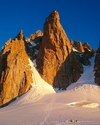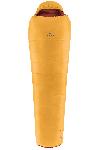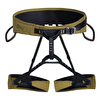Cerro San Lorenzo new Slovenian climbs in Patagonia
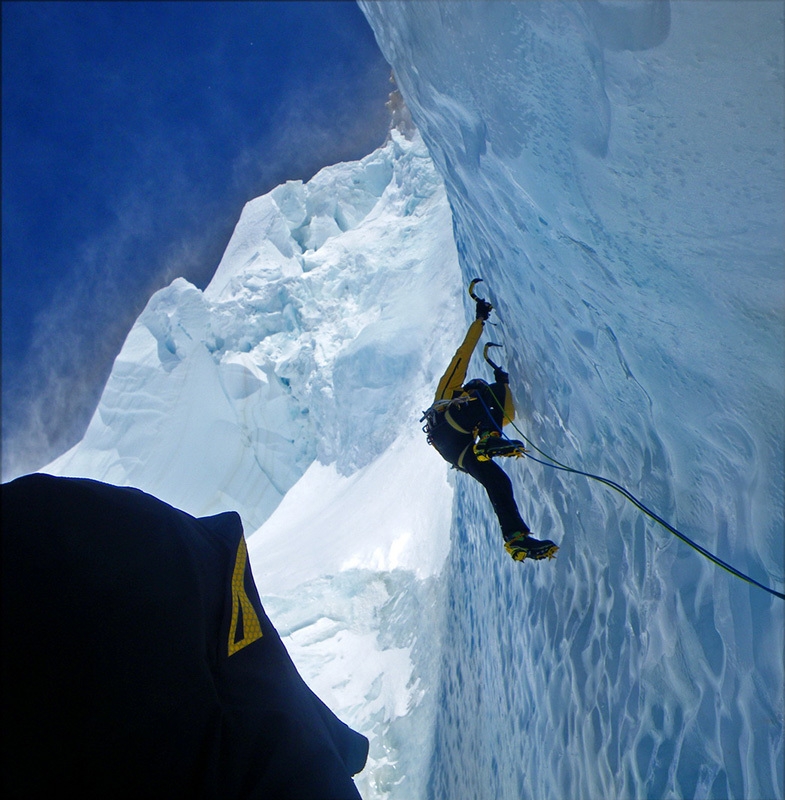
 1 / 18
1 / 18 archive Dejan Koren
archive Dejan Koren
CERRO SAN LORENZO IN PATAGONIA
Cerro San Lorenzo is the second highest peak in Patagonia and is located in a very remote area. Its East Face has been on the wish-list of many alpinists for years. It is almost 2000 meters high, and was untouched.
This past November a team of five Slovenian alpinists comprised of Dejan Koren, Boštjan Mikuž, Rok Kurinčič, Domen Petrovčič and Domen Kastelic spent a month in the area. They reached this via Rio Gallegos and Gobernador Gregores, completing the last section via jeep with the help of Abel Barría.
They established their basecamp at Puesto San Lorenzo, at an old gaucho hut. During an initial good weather window they were able to suss out the face and conditions, fairly dry after a snow-less winter. Despite dry conditions they were able to identify a potential lines for “more or less safe climbing”. The initial good weather was followed by a long period of bad weather that lasted 14 days. This was broken by a short window on the 10th of November when Koren, Kurinčič and Mikuž made a first attempt at the East Face, before being forced back by deteriorating weather.
During this short window Petrovčič and Kastelic climbed a new route up the SW Face of Cerro Hermoso. On November 10 they made the 4-hour approach to the south side of Cerro Hermoso, but somewhere in the middle of this approach the driving rain forced them to stop, pitch the tent and sit and wait almost all day. In the evening the skies partly cleared and they moved further below the mountain. On the next day, November 11, accompanied by strong gusts of wind they climbed a new route up the previously untouched SW face: SE Ridge + Direct Route, TD- 80° M4, 1100m. Conditions on the face were fairly good; the hardest pitch was the last, just below the main ridge and after 6 hours of climbing they reached the summit, happy to have climbed quickly as the weather was quickly deteriorating. From the main summit they continued towards the east summit, then descended down the south-east snow slopes to return to the base of the face and continue back towards base camp the same day.
Waiting patiently in basecamp, the expedition started to run out of both food and time when finally the first signs of a possible good weather window arrived via satellite phone. On the 20th of November both teams set off towards the East Face of Cerro San Lorenzo.
Koren, Kurinčič and Mikuž started from basecamp at midday and at 5 pm reached the base of the righthand side of the East Face, a section that faces southeast. They started climbing unroped at 7 pm, following snow-slopes up to 70°. By midnight they had covered 800m of terrain and had reached the first icefall that connects the lower part of the face with the middle. Here they roped up, climbing mixed terrain to reach the first serac, traversing left for five pitches across very hard ice, to locate a passage between the second and third serac. By dawn they reached the base of the third serac. Despite a windless weather forecast, a southeasterly wind picked up around midnight, gaining strength after sunrise. The wind prevented them from stopping to melt water so on reaching the South-African route and the East ridge, having climbed 1600 vertical meters and at an altitude of 3450m, they decided to call it a day without continuing on to the summit. It was 3 pm and at that point they had climbed for 18 hours. To descend they rappelled down the NE Face. Protected from the wind, they made about 40 rappels (1000m) and reached basecamp at dawn on the 22nd of November, after having been on the go for 40 hours.
For their part, on November 20 Kastelic and Petrovcic made the 8-hour approach to the leftmost part of the 7km wide East Face of Cerro San Lorenzo where they had set their sights on an interesting line between the Pilar Sur tower and the Cumbre Sur east summit of the mountain. Kastelic and Petrovcic bivouacked on the glacier just below the face. On November 21 they started early but progression was slowed down due to soft and heavy snow, and the previous day’s small frozen avalanches aided progress. They reached the first steep part of the wall at daybreak. Snow and ice conditions were deemed sufficient and the steepest sections of the climb were mainly concentrated at the start and the last section of the climb. Due to its eastern aspect the sun reaches the face early causing snow to fall here and there from the right side of the face. But the central part proved technically easier and less exposed., enabling faster progress to be made. Uncertainty prevailed until the final meters of the route: fortunately they discovered an icy passage after 13 hours of climbing they reached the main ridge via a new line called Exit, graded ED 90° M, 1000m. The rock quality on the upper section was so poor that without those icy conditions the climbers could easily have been turned back. On the same day they start descending by rappelling off ice down the south side of the mountain, to them unknown, and on reaching the valley they then settled down for their second bivy. On November 22, their third day out in the mountains, they made the long, full-day trek through the valley back to base camp. This involved searching for passages past the bushes and trees, crossing countless streams, ascending and descending a ridge, and making the exhausting walk across the stone-sprinkled glacier.
THE ROUTES:
Cerro Hermoso, SE Ridge + Direct Route, TD- 80° M4, 1100m, 6h, Domen Petrovčič and Domen Kastelic, 11/11/2015
Cerro San Lorenzo, East face, No Fiesta, ED+, 1600m, 18h (40h), First ascent - Dejan Koren, Rok Kurinčič and Boštjan Mikuž, 20-21/11/2015.
Cerro San Lorenzo, East face, EXIT, ED 90° M, 1000m, 13h, Domen Petrovčič and Domen Kastelic, 21.11.2015.
Sponsors: PZS (Alpine association of Slovenia), Intersocksd.o.o., Grivel, Zamberlan, Singing Rock, Alpstation, Asolo, ObčinaAjdovščina, Mlinotestd.d., Fructald.o.o., Norrona, Tendon, Boreal, Goal Zero Europe, Roo Bar
NEWS CERRO SAN LORENZO
05/01/2003 - Patagonia news 2002
13/03/2006 - San Lorenzo new route
30/01/2013 - Patagonia, news from Fitz Roy, Cerro Torre, the Ragni and more
11/12/2014 - Patagonia first ascent by Colin Haley and Rob Smith
| Expo.Planetmountain | |
| Asolo | |
| Grivel | |
| Zamberlan | |
| www | |
| pataclimb.com | |
| dejankoren.si | |
| altamania.com | |



 Copia link
Copia link

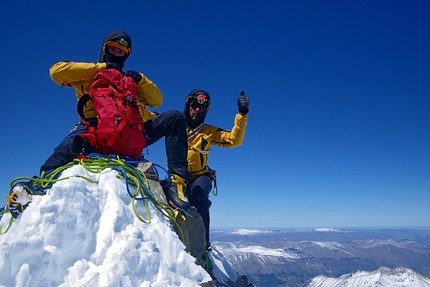
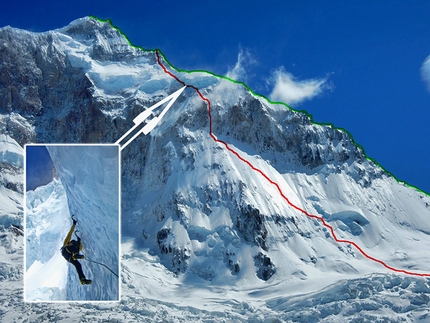
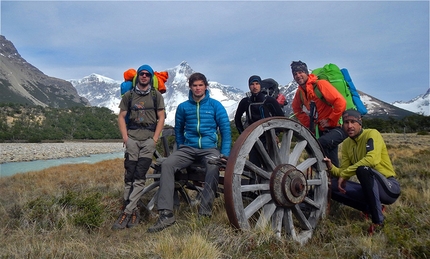
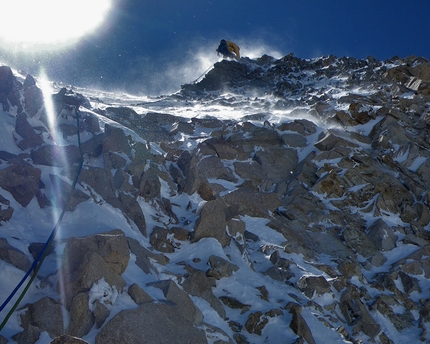
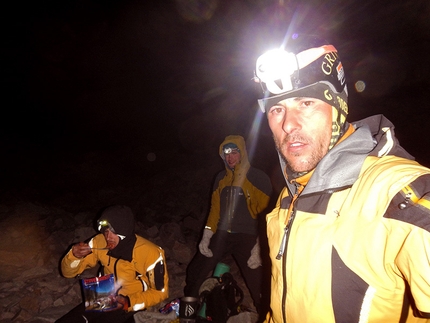
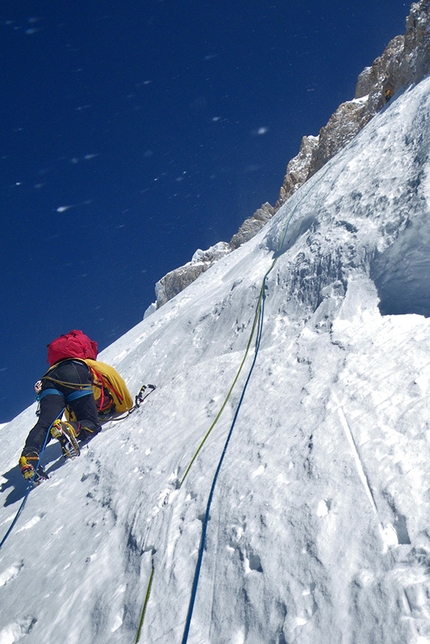
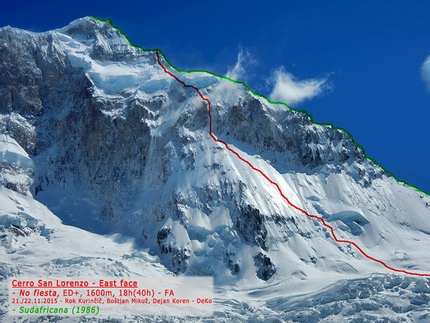
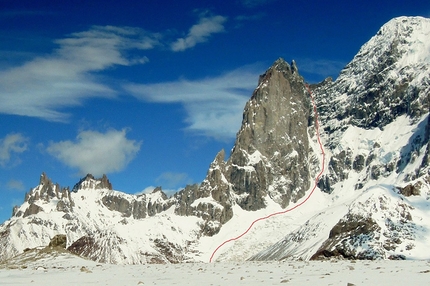
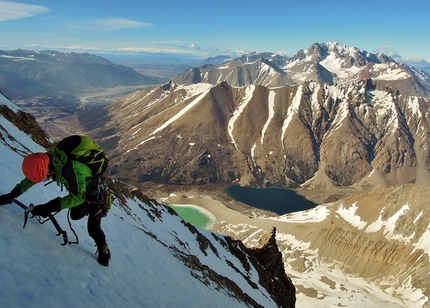
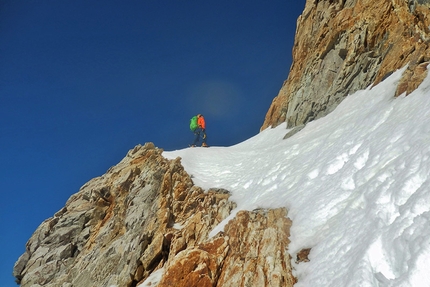
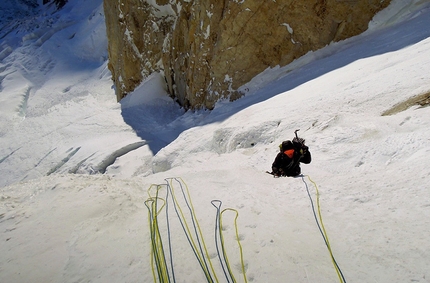
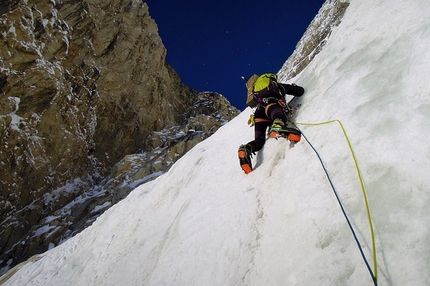
 See all photos
See all photos



